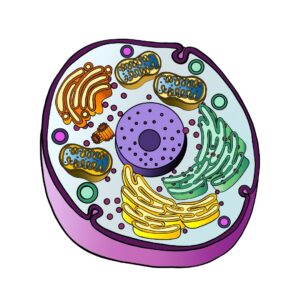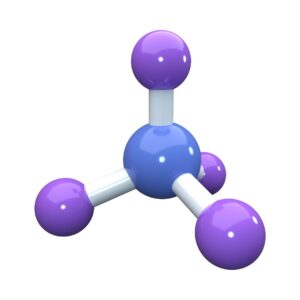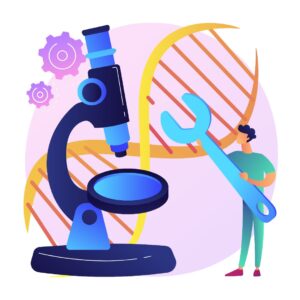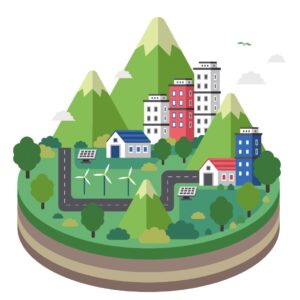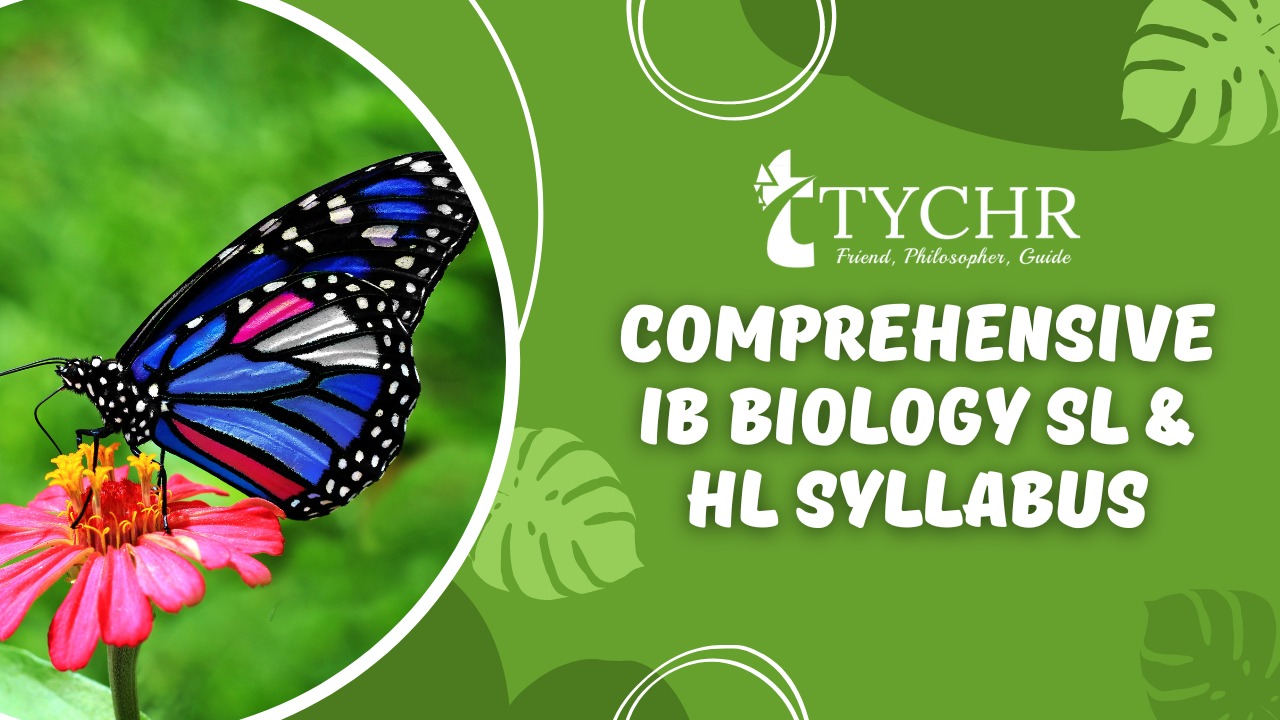| Subtopic | Subtopic Number | IB Points to Understand |
| Evolution and speciation (SL) | 4.1 | - Evolution- It is defined as the cumulative gradual or sudden change in the heritable characteristic of a population.
- Fossils are the petrified remains or traces of animals and plants and the accumulated evidence from these remains are called fossil record.
- Adaptive Radiation refers to the development of different functional structures from a common ancestral form.
- Animal Breeding- The breeding of animals and plants is done artificially by selecting the best individual with the desired traits and crossing them to get the product with the desired trait.
- Homologous structures: The structures which are anatomically the same but perform different functions and focus on common ancestors.
- Adaptive radiation- It refers to the development of different functional structures from a common ancestral form.
- Selective breeding.
|
| Conservation of biodiversity (SL) | 4.2 | - Biodiversity is the variety of life in all its forms, levels and combinations. Define ecosystem diversity, species diversity and genetic diversity.
Causes of Anthropogenic Species Extinction- - Habitat Destruction: Deforestation, urbanization, and agriculture reduce natural habitats.
- Pollution: Contaminants like chemicals, plastics, and oil spills harm species and ecosystems.
- Overexploitation: Overfishing, hunting, and poaching reduce species populations.
- Climate Change: Alters habitats and ecosystems, leading to species’ inability to adapt.
- Invasive Species: Non-native species introduced by humans outcompete or prey on native species.
- Land Use Change: Conversion of natural landscapes for agriculture, mining, and development disrupts ecosystems.
|
| Adaptations (SL) | 4.3 | - Habitat- the place in which a community, species, population or organism lives.
- Organisms have the ability to adapt to their abiotic environment.
- Use transect data to correlate the distribution of plant or animal species with an abiotic variable.
- Recall the conditions required for coral reef formation, including: water depth, pH, salinity, clarity, and temperature.
- Biomes- groups of ecosystems with similar communities due to similar abiotic conditions and convergent evolution.
- Explain adaptations to life in hot deserts and tropical rainforests, including examples in named species of plants, example (cactus), and animals, example (Camels).
- Recall two case studies of the causes of ecosystem loss,including the loss of mixed dipterocarp forest in Southeast Asia.
- Recall evidence for a biodiversity crisis through examples.
- Recall human population growth as a major cause of the current biodiversity crisis, as well as: hunting, urbanization, deforestation, pollution, diseases and invasive alien species.
- Appreciate the need for several approaches to the conservation of biodiversity.
- Appreciate the selection of evolutionarily distinct and globally endangered species for conservation prioritization in the EDGE of Existence programme.
|
| Ecological niches (SL) | 4.4 | - Ecological niche is the role of a species in an ecosystem, and the interactions that influence growth, survival and reproduction.
- State differences between organisms that are obligate anaerobes, facultative anaerobes and obligate aerobes.
- Photosynthesis is the mode of nutrition in plants, algae, and photosynthetic prokaryotes.
- Saprotrophic Nutrition is a mode of nutrition in which organisms obtain nutrients by breaking down dead and decaying organic matter.
- Organisms: Fungi, some bacteria, and certain protists.
1. Phototrophic Archaea - Mechanism: Utilize light as an energy source.
- Example: Halobacterium species use a pigment called bacteriorhodopsin to capture light and generate ATP, but they do not perform photosynthesis like plants.
2. Chemotrophic Archaea - Mechanism: Obtain energy by oxidizing inorganic or organic compounds.
- Types:
- Lithotrophic Archaea: Use inorganic molecules (e.g., hydrogen, sulfur, or ammonia) as energy sources.
- Example: Sulfolobus species oxidize sulfur or iron.
- Organotrophic Archaea: Use organic compounds as energy sources.
- Example: Some methanogens metabolize organic compounds like acetate.
3. Methanogenic Archaea - Mechanism: Produce methane (CH₄) as a byproduct of anaerobic respiration.
- Example: Methanobrevibacter species in the digestive systems of ruminants convert carbon dioxide and hydrogen into methane.
4. Halophilic Archaea - Mechanism: Thrive in high-salt environments and often rely on organic molecules or light (via bacteriorhodopsin) for energy.
- Example: Halobacterium species, which live in environments like salt lakes.
5. Thermoacidophilic Archaea - Mechanism: Survive in hot, acidic environments, often using sulfur compounds as energy sources.
- Example: Sulfolobus species that oxidize sulfur or sulfur compounds in hot springs.
6. Anaerobic Archaea - Mechanism: Live in environments without oxygen, using various anaerobic processes for energy.
- Example: Methanococcus species, which thrive in deep-sea hydrothermal vents using hydrogen as an energy source and producing methane.
- Adaptations of plants for harvesting light.
|
| Populations and communities (SL) | 4.5 | - Populations as interacting groups of organisms of the same species living in an area.
- Interspecific interactions:
- Herbivory: An interaction between plants and animals
- Predation: One is predator and the other is prey
- Parasitism: One organism is host and the other is a parasite that lives in or on the body of the host
- Mutualism: Two species live in a close association and both of them benefit each other.
- Commensalism: One organism benefits from the other which is neither harmed nor benefitted in any way.
- Transect is a method of sampling a population of plants or animals along a longitudinal section of an ecosystem.
- Chi squared tests: These are the tests done to actually check the accuracy of possible ratios come by crossing.
- Understand allelopathy and secretion of antibiotics, including one specific example of each.
- Estimate population size by random sampling.
|
| Energy matter and conservation (SL) | 4.6 | - Ecosystems- open systems in which both energy and matter can enter and exit.
- Pyramid of energy shows the available energy at each trophic level.
- This available energy at each level is called net production.
- The interlinking of two or many food chains is called food web.
- Autotrophs absorb the sunlight and take up inorganic nutrients from the soil to make organic food for the rest of the food chain.
- This loss of the energy is in the form of heat which can’t be used ever again but then contributes to global warming.
- In a closed ecosystem, energy can be exchanged but not the matter.
- Carbon cycle diagrams.
- Outline ecosystems as carbon sinks and carbon sources.
- 19: Explain the release of carbon dioxide into the atmosphere during combustion of biomass, peat, coal, oil and natural gas.
- 20: Analyse the Keeling Curve in terms of photosynthesis, respiration and combustion.
- 21: Explain the dependence of aerobic respiration on atmospheric oxygen produced by photosynthesis, and of photosynthesis on atmospheric carbon dioxide produced by respiration.
- 22: Understand the recycling of all chemical elements required by living organisms in ecosystems
|
| Natural selection (SL) | 4.7 | - Natural selection is the mechanism driving evolutionary change.
- Alfred Wallace and Charles Darwin support this idea as a mechanism of evolution in species over time.
- Sudden drastic change in the DNA sequence due to external or internal factors which produces variation in an organism is called mutation.
- Meiosis: Random orientation of the chromosomes at metaphase offers variation every time the gamete forms.
- The organism that is well adapted to its environment has better chances of survival than the one which is less adapted.
- Examples of evolution include the plumage of birds of paradise
|
| Stability and Change (SL) | 4.8 | - Illustrate stability as a property of natural ecosystems.
- Recall the requirements for stability in ecosystems including: the supply of energy, recycling of nutrients, genetic diversity and climatic variables remaining within tolerance levels.
- Recall the deforestation of the Amazon rainforest as an example of a possible tipping point in ecosystem stability. Understand the importance of transpiration, cooling, air flows and rainfall to global sustainability.
- Understand the use of a Mesocosm model to investigate the effect of variables on ecosystem stability.
- Understand the role of keystone species in the stability of ecosystems.
- Assess the sustainability of resource harvesting from natural ecosystems including one terrestrial plant species and one species of marine fish as examples.
- Factors affecting the sustainability of agriculture-
- Soil erosion
- Leaching of nutrients
- Supply of fertilizers
- Pollution due to agrochemicals
- Carbon footprint.
- Eutrophication of aquatic bodies.
- Biological Oxygen Demand (BOD) is a measure of the amount of oxygen required by microorganisms to break down organic matter in water over a specific period, usually five days at 20°C. It is an important indicator of water quality, particularly in terms of pollution levels.
- Microplastic are contaminating Oceans, and entering living organisms in the Oceans.
|
| Climate Changes (SL) | 4.9 | - Anthropogenic Causes of Climate Change
- Carbon Dioxide (CO₂)
- Fossil Fuel Combustion: Power plants, vehicles, industry.
- Deforestation: Fewer trees to absorb CO₂.
- Cement Production: Releases CO₂ during manufacturing.
- Methane (CH₄)
- Agriculture: Livestock digestion (ruminants), rice paddies.
- Landfills: Decomposition of organic waste produces CH₄.
- Fossil Fuel Extraction: Natural gas leaks, coal mining.
- Melting of landfast ice and sea ice are examples of polar habitat change.
- Depletion of coral reefs is a representation of potential ecosystem collapse.
Approaches to Carbon Sequestration- Afforestation
- Definition: Planting new forests on lands that were not previously forested.
- Benefit: Absorbs CO₂ as trees grow, storing carbon in biomass.
- Forest Regeneration
- Definition: Allowing or encouraging natural recovery of degraded forests.
- Benefit: Enhances CO₂ absorption as forests recover and mature.
- Restoration of Peat-Forming Wetlands
- Definition: Rehabilitating degraded wetlands that form peat, a carbon-rich material.
- Benefit: Traps and stores large amounts of carbon in waterlogged soils, reducing CO₂ emissions.
|
